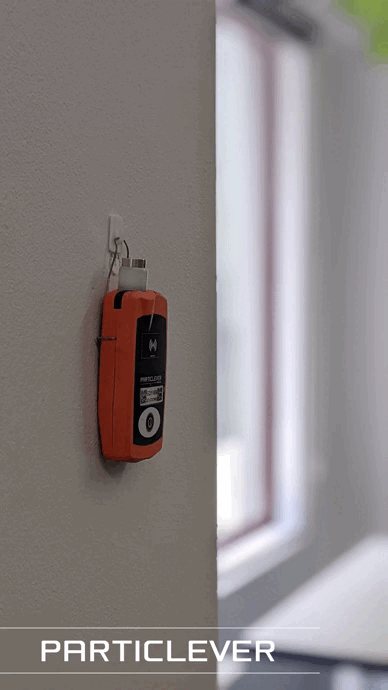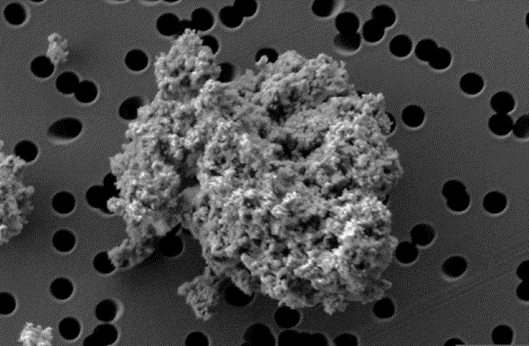
Particlever
Measure respirable nanoparticles
PARTICLEVER is a laboratory that specialises in measuring particles in the air.
Detect, quantify particles and evaluate the risk in your industry. Its technology gives the ability to understand and quantify inhalation exposure to complex substances like nanomaterials, fibres, advanced materials, and mixtures like atmospheric pollution.
Our experts will assist you in:
Finding and listing every situations in your process that might be at risk
Evaluating and highlighting all high-risk situations that are a priority
Assessing each situations through a quantitative evaluation using our patented device
Managing the risk in adapting the critical steps found in your process
Setting OELs if it does not exist, and putting in place a periodical monitoring
What you have to do is:

Renting our portable device to take your operators' and ambient air samples
Taking samples of your suspected powders in dedicated tubes
Sending the samples to our laboratory for further analysis
At the laboratory, we will perform:
Metals detection and quantification by X-Ray Fluorescence
Particles size distribution by high resolution Scanning Electron Microscopy
Send you visual and detailed results with advice from our experts

What are nanoparticles?
Nanoparticles, Ultrafine Particles, Nanomaterials, Nano-Objects, NOAA… despite a different vocabulary, all definitions converge. Due to their high reactivity, nanoparticles tend to consolidate together to form larger sets called aggregates and agglomerates. Thus, to assess the exposure of operators, we will always focus on NOAA (Nano-Objects and their Aggregates and Agglomerates).
The European recommendation 2011/696/EU has defined a Nanomaterial as a natural, accidentally formed or manufactured material containing particles:
- in unbound form
- or as an aggregate
- or in the form of an agglomerate, of which at least 50% of the constituent particles, in the numerical size distribution, have one or more external dimensions between 1 nm and 100 nm.
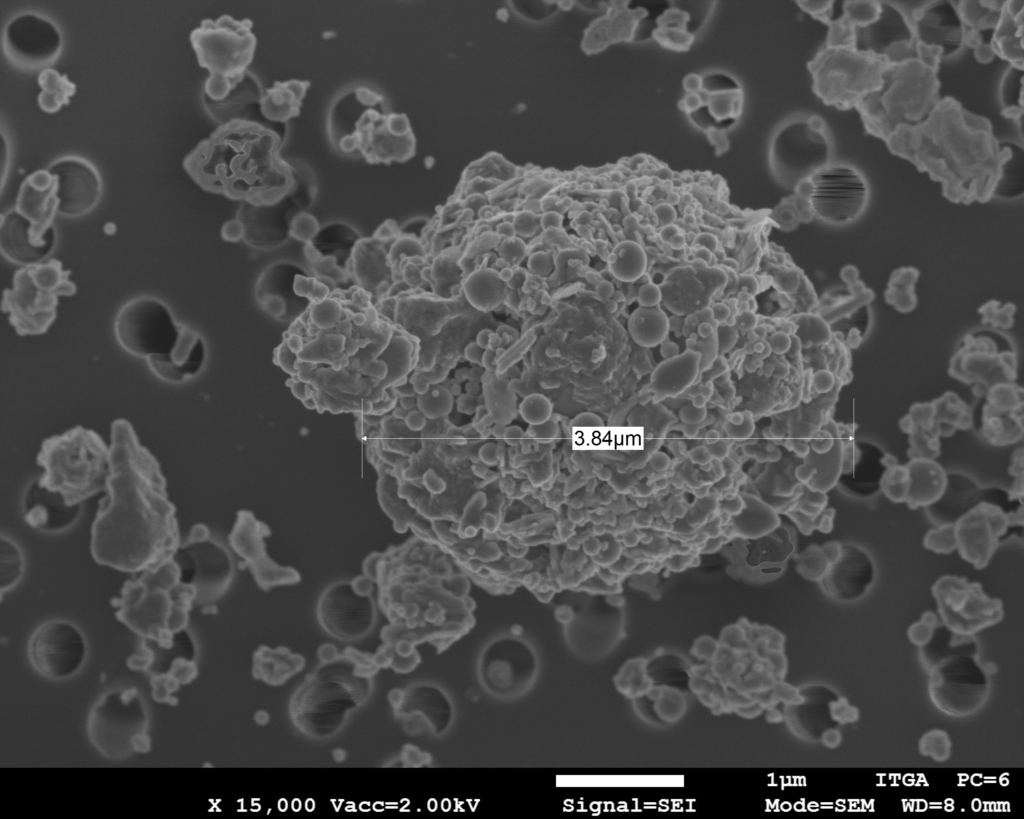
Agglomerate of nano
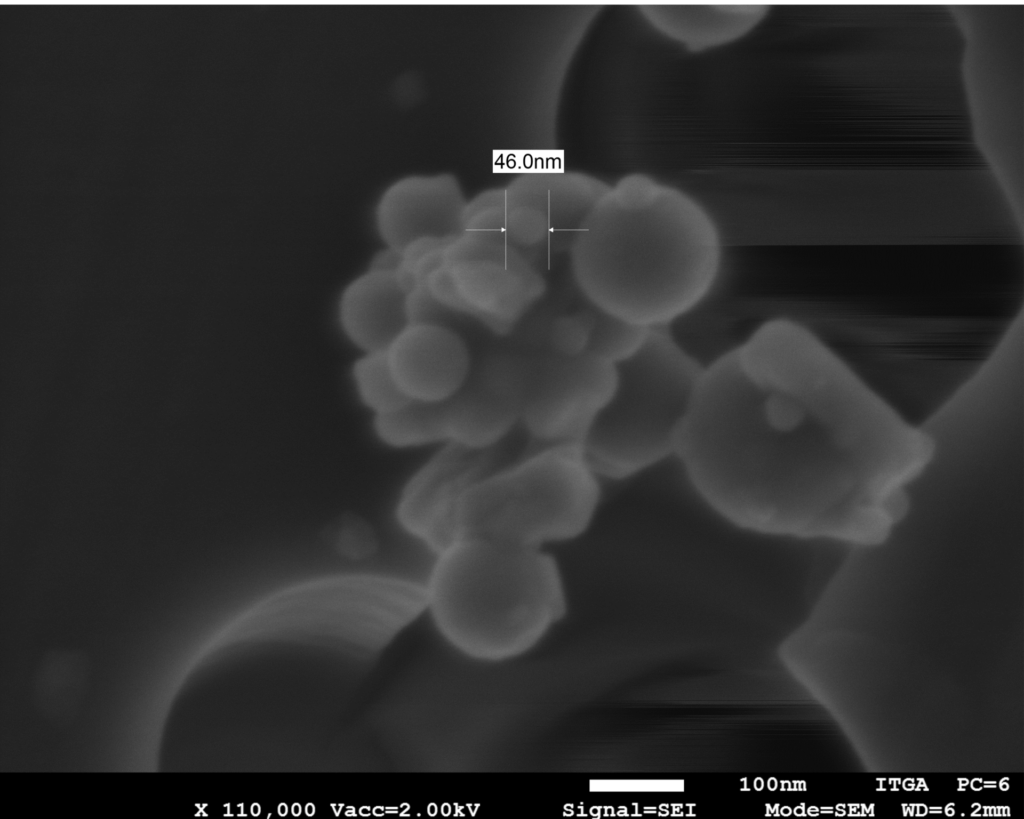
Primary/Constituent particle
What are nanoparticles used for: examples of applications
Property: Photocatalysis
Applications: Cements, glass, coatings and self-cleaning antipollution paints | Sunscreens
Industrial sectors: Construction | Cosmetics
Property: Mechanical resistance
Applications: Lightweight, high-strength composite materials
Industrial sectors: Aeronautics, automotive, sports equipment
Property: Anti-caking agent
Applications: Powdered food (salt, sugar…)
Industrial sectors: Agri-food
Property: Bactericide
Applications: Antibacterial coatings | Antibacterial clothing
Industrial sectors: Health/Pharmaceutical, food processing, household appliances | Textiles
Property: Colour density
Applications: Ink, tyres, batteries
Industrial sectors: Plastics, Inks and paints
Health effects
Deposition of particles along the respiratory tree is guided by their size. Particles between 10 nm and 100 nm are mainly distributed in the alveolar region.
After inhalation, some particles may migrate to:
- The blood
- The lymphatic system
- Brain structures
- The pleura
- Other viscera (liver, spleen)
The main effects are:
- Increased overall mortality
- Increased mortality from respiratory and cardiovascular causes
- Impairment of lung and heart function
- Pulmonary inflammatory effects
- Disruption of blood coagulation
Determinants of nanomaterials toxicity:
- Size
- Specific surface
- Surface properties
- Chemical composition
- Solubility
- Crystalline structure
- State of aggregation and agglomeration
- Number
- Shape
- …
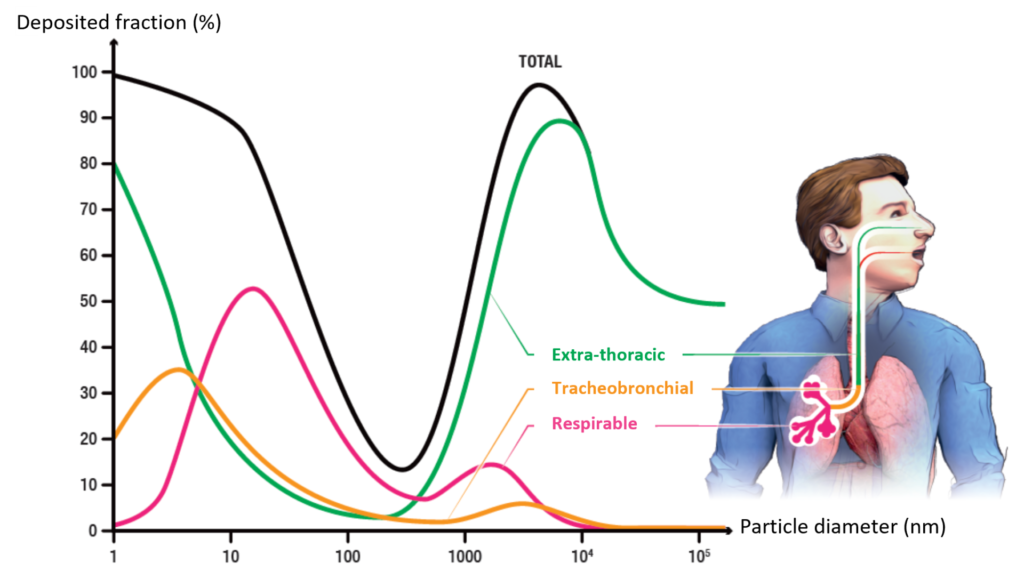
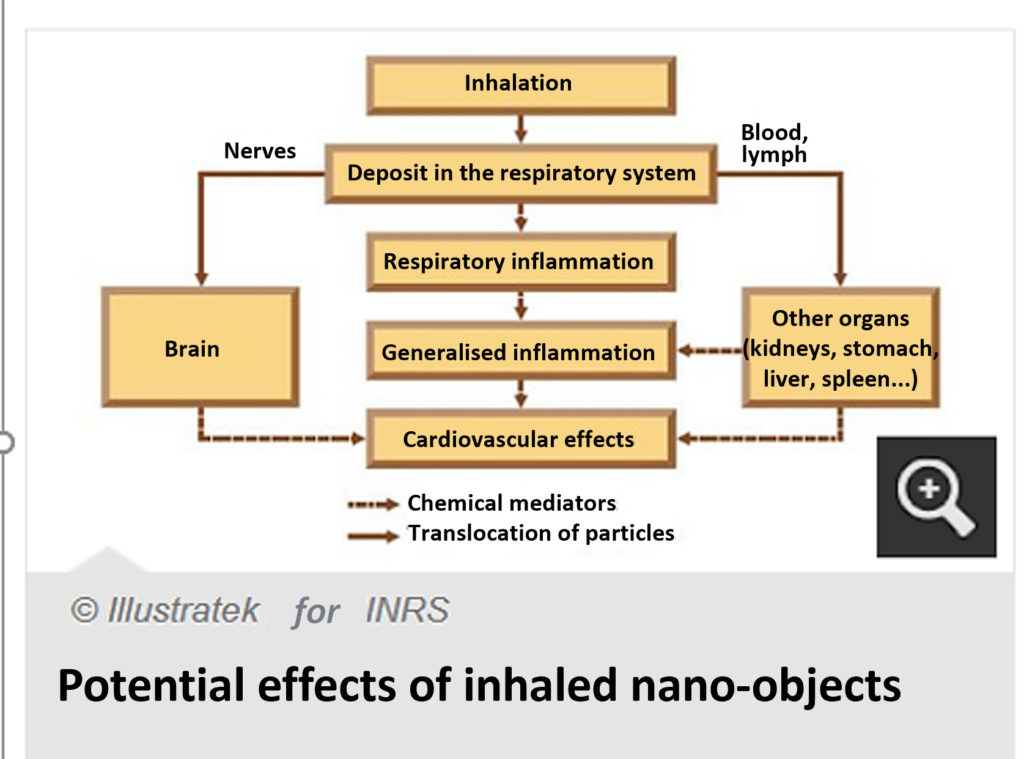
Exposure limits
Few specific exposure limits are available for nano-form as it is not always justified in terms of toxicological studies, however, the risk associated with nanomaterials has been repeatedly highlighted by Safety Agencies and by Health and Safety organisations at the international scale.
Some examples of already known OELs are:
Titanium Dioxide (TiO2)
Inhalable
(>0.4 um)
Titanium Dioxide (TiO2)
Fine
(0.1 um to 0.4 um)
NIOSH REL
Titanium Dioxide (TiO2)
Ultrafine
(<100 nm)
NIOSH REL [2013]
Japan JSOH [2015]
Titanium Dioxide (TiO2)
Ultrafine
(<100 nm)
INRS/HCSP
Carbon Nano-Tubes (CNTs)
and
Nano-Fibres (CNFs)
NIOSH [2013]
Carbon Nano-Tubes (CNTs)
and
Nano-Fibres (CNFs)
SUVA [2015]
Nanoparticles examples of what we can measure
PARTICLEVER measures particles emitted by metal powders, including:
- Titanium Dioxide (TiO2)
- Amorphous Silica (SiO2)
- Zinc Oxide (ZnO)
- Alumina (Al2O3)
- Calcium Carbonate (CaCO3)
- Silver (Ag)
- Cadamium (Cd)
- Cerium Oxide (CeO2)

PARTICLEVER measures fibrous particles, rods or tubes, their aggregates and agglomerates, including:
- Carbon Nanotubes (CNTs)
- Cellulose Nanofibrils (CNF) or Nanocrystals (CNC)
- Carbon Nanofibres (CNFs)
- Fibrous Plastic Residue

PARTICLEVER measures particles containing non-fibrous elemental carbon, including:
- Carbon Black (C)
- Soot
- Combustion Residue
- Graphite
- Carbon-Based Composites

PARTICLEVER measures metal-based particles incidentally emitted which are potentially in nanoparticles form.
- Cobalt (Co)
- Arsenic (As)
- Silver (Ag)
- Cadmium (Cd)
- Mercury (Hg)
- Lead (Pb)
- Welding Fumes
- Machining

pollution.PARTICLEVER measures Diesel Particles to verify workers’ exposure, or to measure atmospheric pollution.

PARTICLEVER measures particles composed of organic material including emissions from:
- Plastic-Making Processes
- Biological Materials
- Spheres
- Capsules
- Pollens

PARTICLEVER measures particles of lightweight elements like:
- Beryllium (Be)
- Lithium (Li)
- Boron (B)


